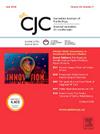The Role of Nitric Oxide in the Sweep Gas for Patients Receiving Extracorporeal Membrane Oxygenation or Cardiopulmonary Bypass
IF 5.8
2区 医学
Q1 CARDIAC & CARDIOVASCULAR SYSTEMS
引用次数: 0
Abstract
Nitric oxide (NO) was proclaimed the 1992 “molecule of the year” by Culotta in Science magazine because of its importance in neuroscience, physiology, and immunology. Inhaled NO has been in clinical use for over 35 years to decrease pulmonary hypertension and improve oxygenation. Over the past 20 years, there has been much research into understanding the role of NO on cell surface receptors, mitochondria, and intracellular processes that involve calcium and superoxide radicals. This research has shown that, irrespective of the cause, NO has a major role in the systemic inflammatory response syndrome and ischemia-reperfusion injury.1 More recent clinical research has focussed on NO use in patients undergoing cardiopulmonary bypass and receiving extracorporeal life support, with some centres incorporating NO into sweep gas as part of routine practice. In this article we review NO pathways in humans, the biologic effects of NO, the interplay between NO and red blood cells, and animal and human studies on the effects of exogenously administered NO.
一氧化氮在体外膜氧合或体外循环患者扫气中的作用。
由于一氧化氮(NO)在神经科学、生理学和免疫学中的重要性,库洛塔在1992年的《科学》杂志上宣布它为“年度分子”。吸入一氧化氮用于降低肺动脉高压和改善氧合已超过35年。在过去的20年里,人们对一氧化氮在细胞表面受体、线粒体以及涉及钙和超氧自由基的细胞内过程中的作用进行了大量的研究。本研究表明,无论何种原因,NO在系统性炎症反应综合征(SIRS)和缺血再灌注损伤(IRI)中都起着重要作用最近的临床研究集中于NO在接受体外循环和体外生命支持的患者中的应用,一些中心将一氧化氮纳入扫描气体作为常规实践的一部分。本文综述了一氧化氮在人体中的途径、一氧化氮的生物学效应、一氧化氮与红细胞的相互作用以及外源性一氧化氮对人体和动物的影响。
本文章由计算机程序翻译,如有差异,请以英文原文为准。
求助全文
约1分钟内获得全文
求助全文
来源期刊

Canadian Journal of Cardiology
医学-心血管系统
CiteScore
9.20
自引率
8.10%
发文量
546
审稿时长
32 days
期刊介绍:
The Canadian Journal of Cardiology (CJC) is the official journal of the Canadian Cardiovascular Society (CCS). The CJC is a vehicle for the international dissemination of new knowledge in cardiology and cardiovascular science, particularly serving as the major venue for Canadian cardiovascular medicine.
 求助内容:
求助内容: 应助结果提醒方式:
应助结果提醒方式:


